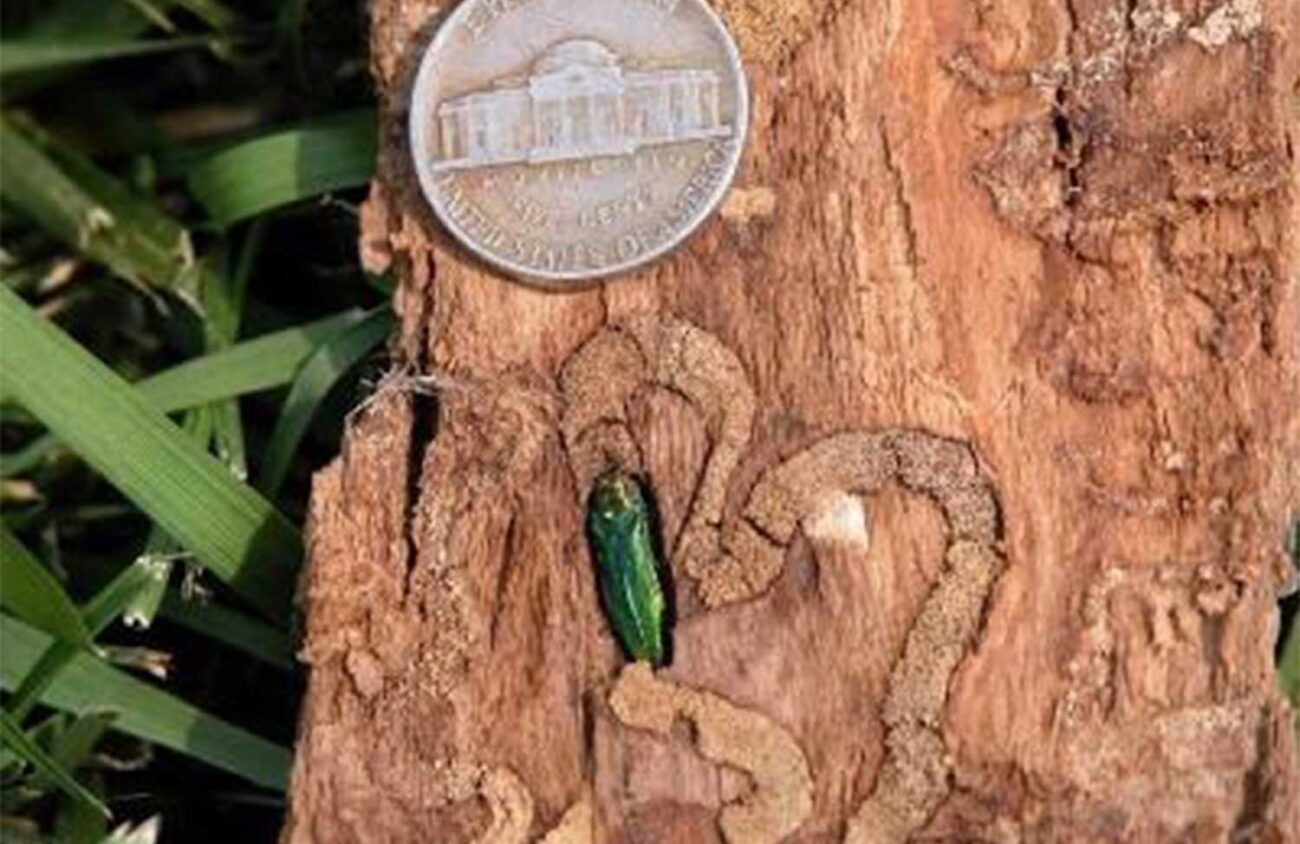By Alby Thoumsin
In 2002 in Michigan, many ash (Fraxinus sp.) trees started to show obvious signs of decline, and after careful inspections, arborists and biologists soon discovered a pest unknown to the U.S. as the emerald ash borer (Agrilus planipennis). The origin of the introduction of the insect on this continent was very likely shipping wood crates infested with larvae and pupae that hatched and dispersed in the state.
The adult insects emerge newly hatched from pupae in late spring and summer and then look for ash trees to lay their eggs inside crevices of the bark. The larvae emerge and feed on the phloem of the tree, disrupting the flow of water and nutrients, leading to eventual death.
In Michigan, within a few years, millions of ash trees died and had to be removed. The pest quickly spread to surrounding states, creating havoc and changing landscapes dramatically.
Ash trees are a major asset in urban areas since they tolerate poorly drained soils and, up to the arrival of emerald ash borer, had no major problems. There are no American or European species of ashes that are immune, and the effects have been disastrous.
The presence of ash trees in wetlands and swampy areas provide many benefits from shade relief for water sources, habitat, soil retention and improvement, excellent wood qualities and medicine for Indigenous communities and financial assets for land owners and municipalities.
The emerald ash borer jumped to Boulder, Colorado, in 2013, where it was suddenly found and where the local urban forestry department tried to eradicate it without success. Such a leap from the Midwest to the Rocky Mountains couldn’t have occurred so fast without the intervention of humans, since there is no continuous population of ash trees between the two regions where the insects could have traveled and reproduced.
This is what has likely been the cause of the emerald ash borer population found in summer 2022 in Forest Grove, just southwest of Portland; somehow, wood with larvae inside traveled to our state and has established itself in the area.
An Oregon Department of Forestry biologist found another population in Silverton in 2024 and, from his observations, estimated that the population was established earlier than the one in Forest Grove. Urban foresters, foresters and arborists who already were on the lookout for the pest are now on high alert, starting with the city of Portland.
The trick is accurate identification before “crying wolf.” Two Oregon lookalikes are often mistaken for emerald ash borers: the golden buprestid and the Western cedar borer, both closely related to the emerald ash borer but much larger. The latter is between 3/8 and 1/2 inch long and has a narrow, shiny, metallic green body with two large black eyes.
Here are the signs to look for: bark splitting with S-shape galleries seen underneath; obvious die-back in the crown; sloughing off the bark from woodpecker activities in search of the larvae to feed on; production of many epicormic branches (water sprouts) in lower levels of the crown, down to the base; and D-shaped ⅛-inch exit holes in the bark.
By removing the bark, you might even find a few larvae; they are white with triangular segments and measure about 1 inch in length.
The trees can be preventatively treated with micro injections with good results, ideally before the trees have been attacked since they need healthy and sufficient foliage mass to do the intake of the insecticide and protect themselves. Injections are done every other year, but treatment needs to be realistic since it is virtually impossible to treat every single ash tree. Many will die before the emerald ash borer starts to plateau and slowly reduces its population.
Municipalities and home owners with many trees will have to be strategic in their approach to treatment. Applications of insecticide are often controversial, even if the treatment via micro-injections has minor effects on the environment. On the flip side, the loss of millions of trees in Oregon will be devastating. You will want to call an International Society of Arboriculture certified arborist who either received proper training on the identification of the pest or is at least aware of its presence in Oregon.
For more information, contact the Oregon Department of Forestry or visit OregonEAB.com. Suspected emerald ash borer sightings should be reported at OregonInvasivesHotline.org, and you can find a local ISA certified arborist at TreesAreGood.org.
The Garden Palette is Kim Kelly, Cynthia Doak, John Fischer, Rachel Foster and Alby Thoumsin. Have a question for the writers? Gardening@EugeneWeekly.com.
